Iwate is a prefecture in the Tōhoku region of Japan. It is home to a diverse range of bird species, including migratory and endemic species.
This article provides an overview of the different bird species that can be found in Iwate, as well as information on their habitats and behaviors. From the majestic white-tailed eagle to the beautiful Japanese bush warbler, Iwate is a paradise for bird lovers.
There are numerous reserves in the area that are dedicated to preserving the natural habitats of birds, as well as providing opportunities for bird-watching.
Whether you’re an experienced bird-watcher or just looking to get a glimpse of some of the amazing birds in Iwate, there are plenty of opportunities to do so.
1. Japanese Green Pheasant
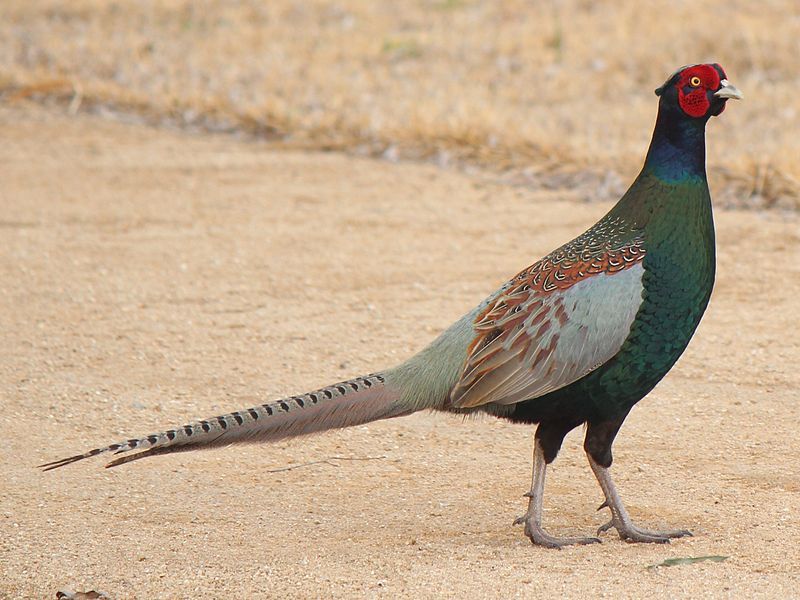
The green pheasant, scientifically known as Phasianus versicolor, is a species of bird native to the Japanese archipelago. It is the national bird of Japan and is also sometimes referred to as the Japanese green pheasant.
This species is omnivorous, meaning it eats both plants and animals. It is closely related to the common pheasant, Phasianus colchicus, and some scientific authorities consider it to be a subspecies of the common pheasant. The green pheasant has a distinct plumage.
It has a greenish-gray head and neck with a white patch on its throat. The rest of its body is mainly brown, with some white and black markings on its wings.
Its bill, legs, and feet are yellowish-orange in color. The green pheasant is found mainly in mountainous areas of Japan and is known to inhabit forests, open grasslands, and agricultural areas. It often forages for food in small groups, but can also be seen alone or in pairs.
Its diet consists of seeds, insects, and small invertebrates. The green pheasant is an important species in terms of conservation. Its population has declined due to habitat loss, hunting, and other human activities.
Efforts are being made to conserve this species and its habitat.
| Kingdom | Animalia |
| Phylum | Chordata |
| Class | Aves |
| Order | Galliformes |
| Family | Phasianidae |
| Genus | Phasianus |
| Species | P. versicolor |
2. Eurasian Coot
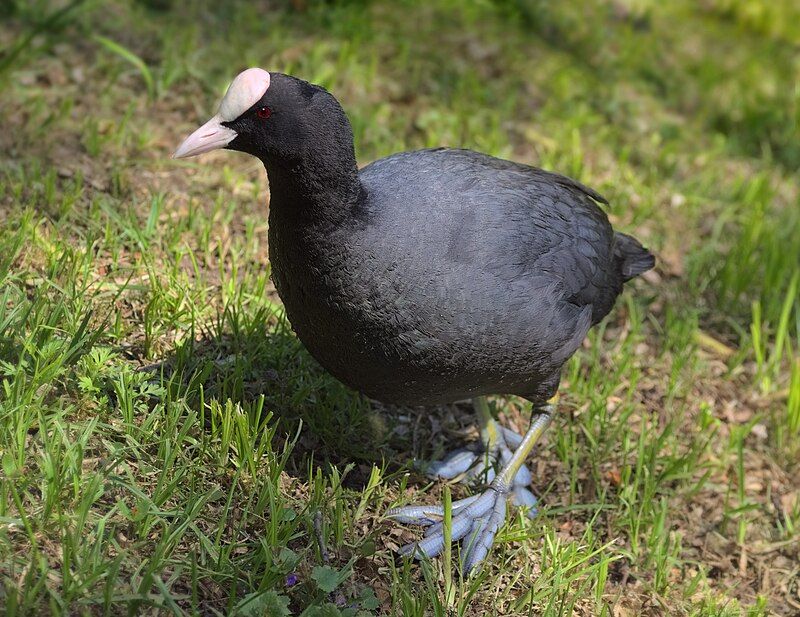
The Eurasian Coot is a member of the Rallidae family, which includes rails and crakes. It is commonly found in Europe, Asia, Australia, New Zealand and parts of North Africa. It is also known as the common coot or Australian coot.
This bird is distinguished by its slaty-black body, glossy black head and white bill with a white frontal shield. The Eurasian Coot is small to medium sized, with a length of between 30 cm to 40 cm and a wingspan of around 50 cm.
Its body is mostly black, with the head having a glossy sheen. Its bill is white with a distinctive white frontal shield on its forehead.
Its legs are a reddish-brown colour and it has a short tail. The Eurasian Coot is a gregarious species, living in flocks of up to hundreds of individuals. It is an omnivorous feeder, consuming a variety of aquatic vegetation, insects, seeds, and small fish.
It is a vocal species, typically making soft “clicking” noises while in flight. The Eurasian Coot is a strong and powerful flier, often flying in large flocks. It is a migratory species, which travels long distances to its wintering grounds.
Its preferred habitat is freshwater lakes, marshes and ponds, although it can also be found in brackish and coastal environments. The Eurasian Coot is a distinctive bird, easily recognisable due to its black body, glossy head and white bill.
Its omnivorous feeding habits and migratory behaviour make it an interesting species to observe in the wild.
| Kingdom | Animalia |
| Phylum | Chordata |
| Class | Aves |
| Order | Gruiformes |
| Family | Rallidae |
| Genus | Fulica |
| Species | F. atra |
3. Whooper Swan
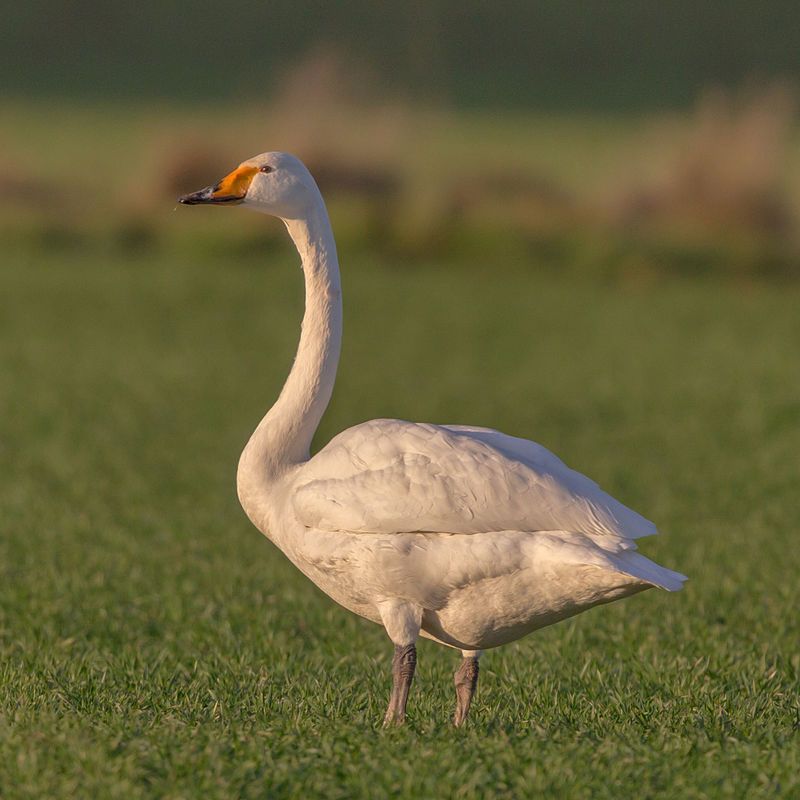
The whooper swan, also known as the common swan, is a large bird that is found throughout the northern hemisphere. It is white in color and has a black bill. It is the largest species of swan found in Europe and Asia and is the national bird of Finland.
The whooper swan is closely related to the North American trumpeter swan and is the type species for the genus Cygnus, which includes all swans. It is a migratory bird and can be found in a variety of habitats, including wetlands, lakes, and rivers.
The whooper swan has a distinctive call, which is why it is also known as the “singing swan”. It is a social bird and can often be seen in large flocks. The whooper swan is a beautiful bird and is an important part of many ecosystems.
| Kingdom | Animalia |
| Phylum | Chordata |
| Class | Aves |
| Order | Anseriformes |
| Family | Anatidae |
| Genus | Cygnus |
| Species | C. cygnus |
4. Eastern Spot-Billed Duck
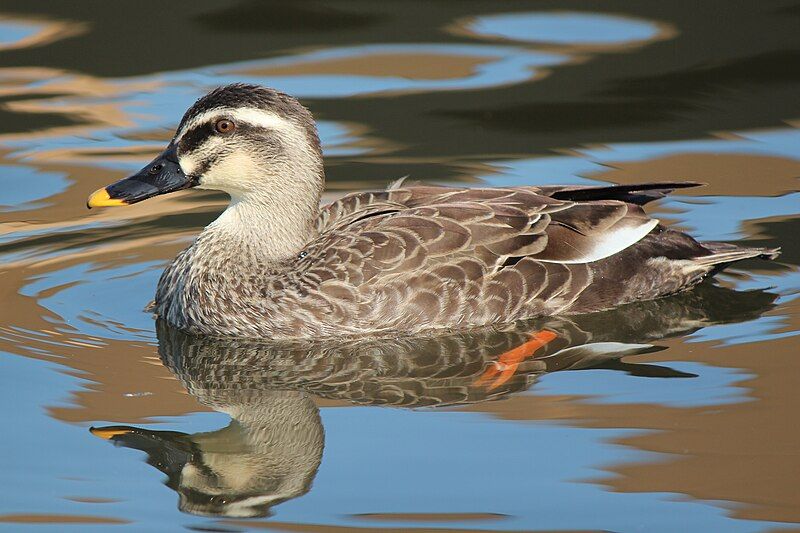
The eastern spot-billed duck, or Chinese spot-billed duck, is a species of dabbling duck found in East and Southeast Asia. This species was previously considered to be a subspecies of the Indian spot-billed duck, and both were referred to as the spot-billed duck.
The name of this species of duck is derived from the yellow spot found on its bill. This species of duck is typically found in wetlands, such as shallow lakes, ponds, and marshes.
They often feed on small fish, invertebrates, and aquatic plants, which they filter from the water using their bill.
The eastern spot-billed duck is a species of dabbling duck, meaning it prefers to feed near the surface of the water and forages by tipping its head underwater to reach food. The species is also known to migrate seasonally, usually in winter, to South-East Asia.
Its conservation status is currently listed as of least concern by the International Union for Conservation of Nature.
| Kingdom | Animalia |
| Phylum | Chordata |
| Class | Aves |
| Order | Anseriformes |
| Family | Anatidae |
| Genus | Anas |
| Species | A. zonorhyncha |
5. Little Grebe
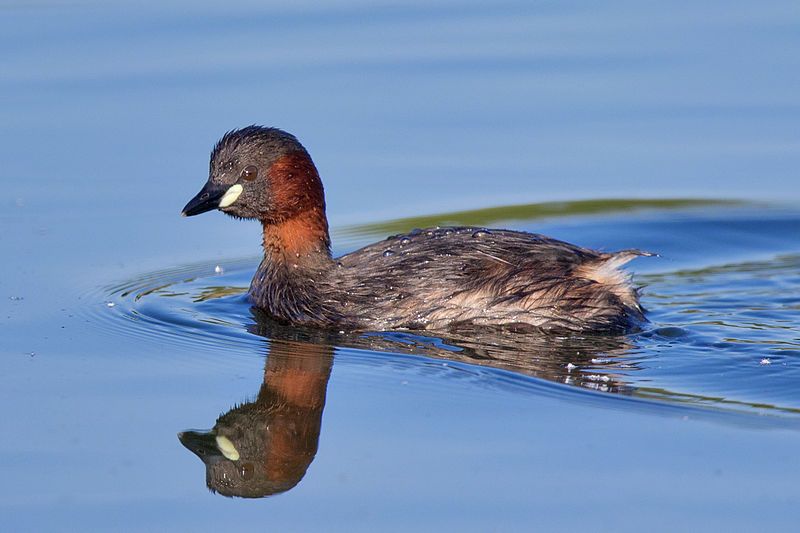
The Little Grebe, or Dabchick, is a species of waterbird that belongs to the Grebe family. The scientific name of this species is derived from Ancient Greek, specifically takhus meaning “fast” and bapto meaning “to sink under”.
The specific epithet ruficollis comes from Latin words rufus which translates to “red” and collis which means “necked”. This term is derived from the Latin collum which means “neck”.
The Little Grebe is known for its characteristic red neck and its ability to move quickly through the water. It is a small bird with short legs that is adept at diving and swimming, allowing it to forage for food in aquatic environments.
It is a highly social species and can be found in large groups in lakes and ponds throughout the world.
| Kingdom | Animalia |
| Phylum | Chordata |
| Class | Aves |
| Order | Podicipediformes |
| Family | Podicipedidae |
| Genus | Tachybaptus |
| Species | T. ruficollis |
6. Mallard
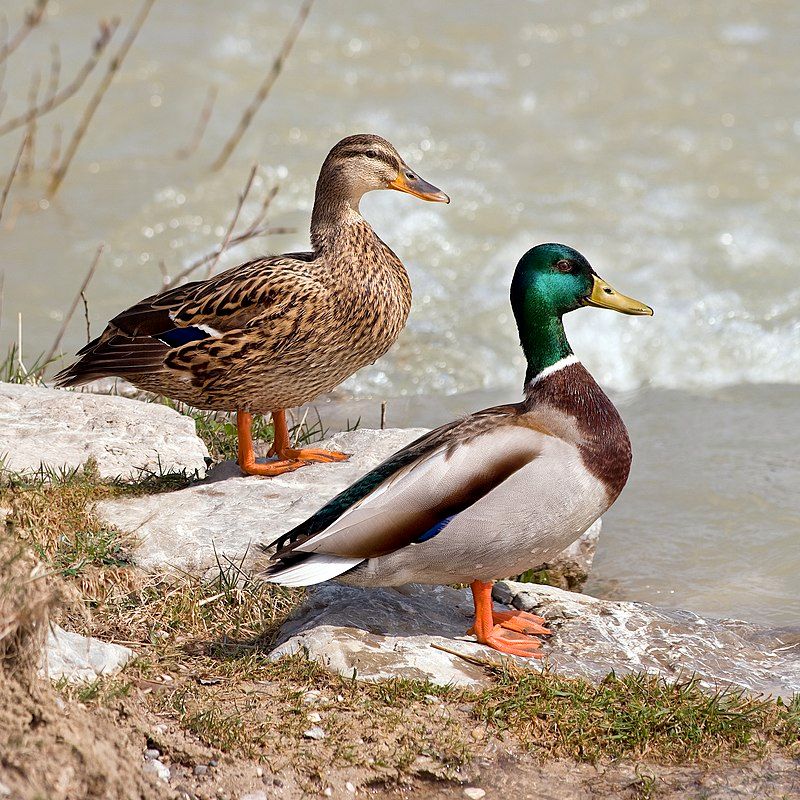
The mallard or wild duck is a species of dabbling duck that can be found across a wide range of regions in the world. It is native to parts of the Americas, Europe, and North Africa; but it has also been introduced to a number of other countries as well.
In the Americas, it can be found in New Zealand, Australia, Peru, Brazil, Uruguay, Argentina, Chile, Colombia, and the Falkland Islands.
It has also been introduced to South Africa. The Mallard is well-suited to temperate and subtropical climates, which is why it can be found in so many different regions across the world.
Its adaptability makes it a successful species and its wide range highlights its ability to migrate and thrive in different habitats.
This has enabled it to establish itself in areas where it was not originally found, and it has become a common sight in many parts of the world.
| Kingdom | Animalia |
| Phylum | Chordata |
| Class | Aves |
| Order | Anseriformes |
| Family | Anatidae |
| Genus | Anas |
| Species | A. platyrhynchos |
7. Black-Tailed Gull
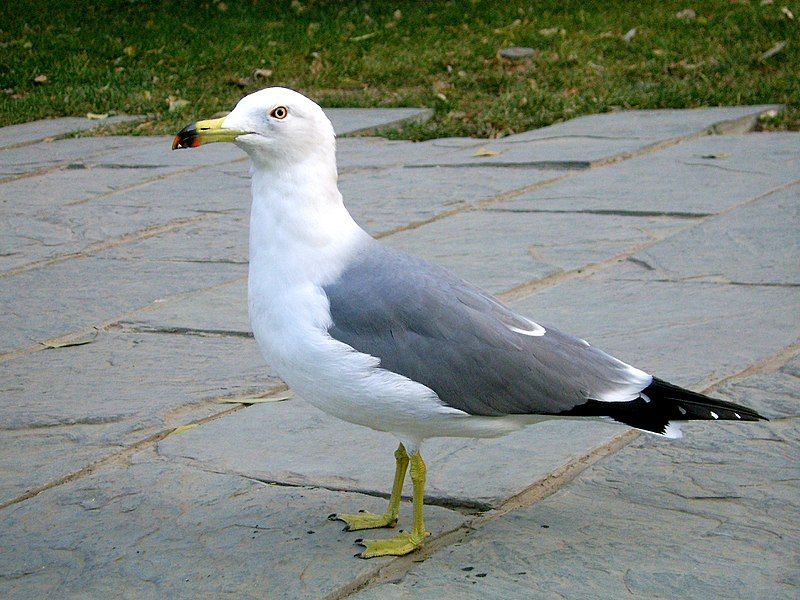
The black-tailed gull is a species of seagull that is native to the coastal areas of East Asia. It is a medium-sized gull, measuring around 17-19 inches in length and has a wingspan of around 33-37 inches.
It is distinctive due to its black tail, which is rarely seen on other species of gulls. The black-tailed gull is mainly gray in color, with a white underside and black tips on its wings.
Its head is white and it has a yellow bill and yellow legs. The black-tailed gull can be found in countries such as China, Japan, North Korea, South Korea and Russia, among others.
It prefers to inhabit coastline areas, such as estuaries, mudflats, and lagoons, although it is also a frequent visitor to inland bodies of water. During the breeding season, it nests on rocky cliffs or on small islands.
It feeds mainly on small fish, crustaceans, and other invertebrates. The black-tailed gull is listed as a species of least concern by the International Union for Conservation of Nature. Its population is stable and it is not considered at risk of extinction.
It is a migratory species, with the majority of birds flying south to warmer climates during the winter months.
| Kingdom | Animalia |
| Phylum | Chordata |
| Class | Aves |
| Order | Charadriiformes |
| Family | Laridae |
| Genus | Larus |
| Species | L. crassirostris |
8. White-Bellied Green Pigeon
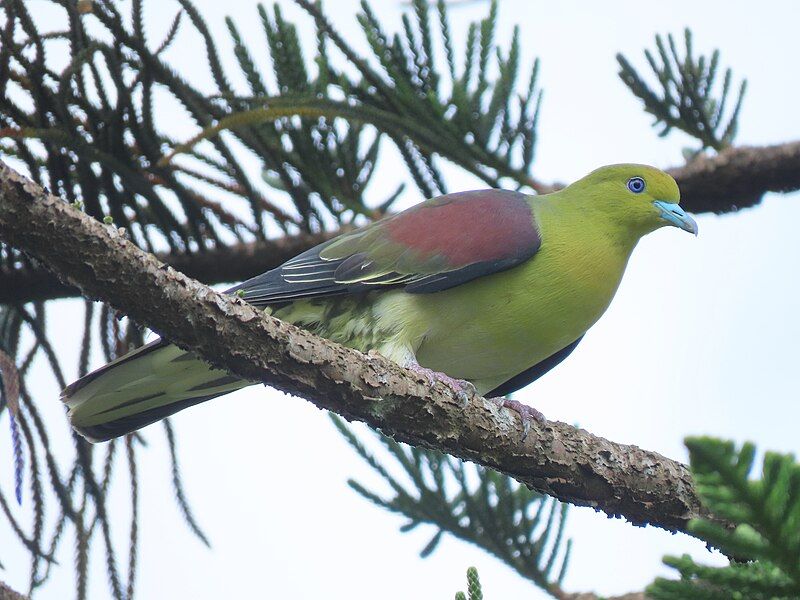
The white-bellied green pigeon is a species of bird found across many parts of Asia. It can be found in countries such as China, Japan, South Korea, Laos, Russia, Taiwan, Thailand, India, and Vietnam.
This species of bird is found in temperate forests, where it lives among trees and plants. What makes this species of bird unique is its unusual habit of drinking saltwater.
This behavior is not seen in other species of birds, and it is believed that this is an adaptation to the environment in which they live.
The saltwater helps the pigeon to stay hydrated in its natural habitat, where fresh water may be scarce. The white-bellied green pigeon can also be found in urban areas, where they can find sources of food and water. The diet of the pigeon consists of fruits, seeds, and insects.
Due to its ability to adapt to different environments, it is considered a hardy species of bird. Overall, the white-bellied green pigeon is a species of bird that is both unique and resilient.
It is capable of living in many different climates, and it is known for its unusual habit of drinking saltwater. This bird is a great example of adaptation and resiliency in the animal kingdom.
| Kingdom | Animalia |
| Phylum | Chordata |
| Class | Aves |
| Order | Columbiformes |
| Family | Columbidae |
| Genus | Treron |
| Species | T. sieboldii |
9. Common Pochard
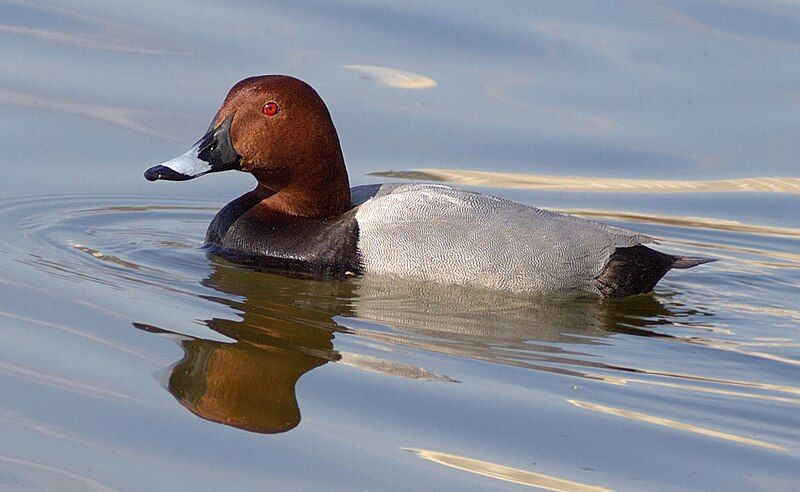
The common pochard is a species of diving duck that can be found in many parts of the world.
Its scientific name is derived from two distinct sources: Aithuia, which is a seabird mentioned by ancient authors such as Hesychius and Aristotle, and the Latin word ferina, which means “wild game” or “wild”.
By combining these two sources, the scientific name of the common pochard is a reflection of its wild nature. The pochard is a medium-sized duck, typically measuring between 16-18 inches in length and weighing around 2-2.5 pounds.
It has a long, broad bill and its body is usually a dark reddish-brown color. It is also known for its distinctive white patch found on its head and neck. In the wild, the common pochard can be found in wetland areas, such as ponds, lakes, and marshes.
It is a migratory species, and its preferred diet consists of aquatic plants, insects, and small fish. It is an important species for the conservation of wetland habitats, and its presence in an area is an indication of a healthy aquatic ecosystem.
The common pochard is an important species to recognize and appreciate. Its scientific name is a reflection of its wildness, and it is an important part of wetland habitats. It is also a species that is worth protecting, as it is a beautiful and fascinating avian species.
| Kingdom | Animalia |
| Phylum | Chordata |
| Class | Aves |
| Order | Anseriformes |
| Family | Anatidae |
| Genus | Aythya |
| Species | A. ferina |
10. Black-Headed Gull
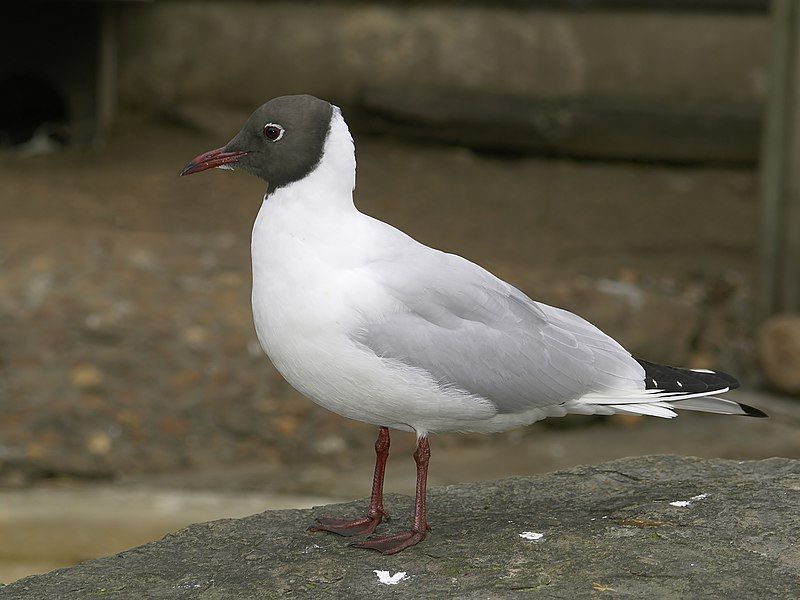
The black-headed gull is a small species of gull that is found in many parts of the Palearctic region, which includes Europe and parts of coastal eastern Canada. The majority of black-headed gulls migrate south during the winter, seeking out warmer climates.
However, some birds remain in the mildest regions of Europe, where the temperatures are not as severe. These birds usually reside in coastal areas, where they can take advantage of abundant food sources and milder climates.
This species has adapted to the colder climates of Europe and Canada, with their black heads and wings helping to insulate them from the cold. They are also able to find food in both coastal and inland areas, making them a very successful species.
| Kingdom | Animalia |
| Phylum | Chordata |
| Class | Aves |
| Order | Charadriiformes |
| Family | Laridae |
| Genus | Chroicocephalus |
| Species | C. ridibundus |
11. Common Kingfisher
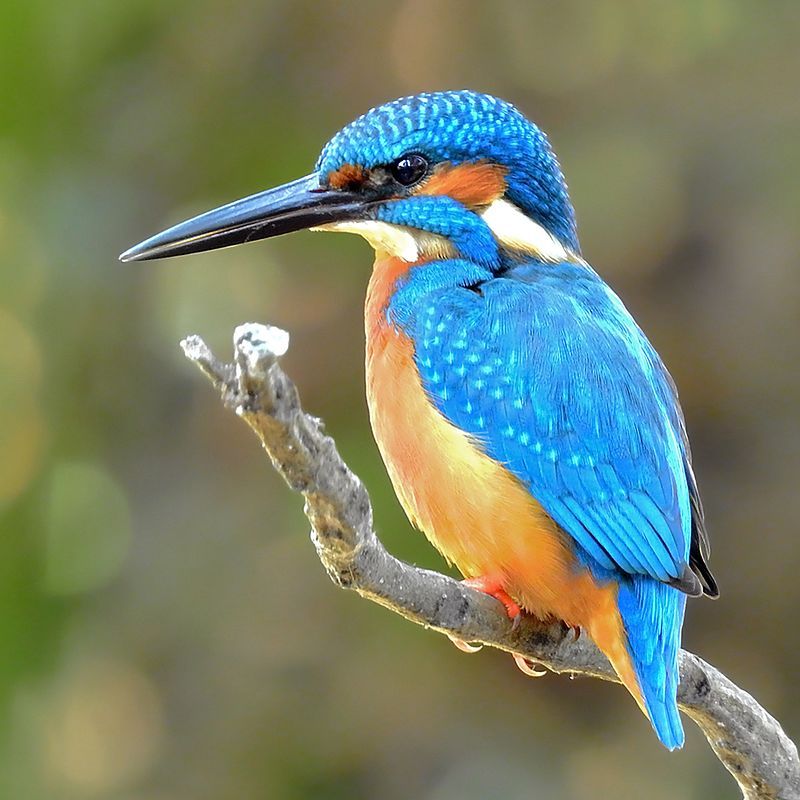
The common kingfisher is a small bird that is found in many parts of Eurasia and North Africa, with seven distinct subspecies.
It is a resident of its range, meaning that it stays in the same area year-round, but it will migrate from areas where rivers freeze during the winter season.
This species of kingfisher is also known as the Eurasian kingfisher and river kingfisher, and it inhabits rivers, lakes, and wetlands. It has a wide variety of colors on its body, usually bright blues and greens, and a loud, distinctive call.
It feeds on small fish, aquatic insects, and crustaceans, and it can be found perched on branches or rocks near the water, watching for prey.
The common kingfisher is an important part of the ecosystems it inhabits, helping to keep populations of certain fish and insect species in check.
| Kingdom | Animalia |
| Phylum | Chordata |
| Class | Aves |
| Order | Coraciiformes |
| Family | Alcedinidae |
| Genus | Alcedo |
| Species | A. atthis |
12. Grey Heron
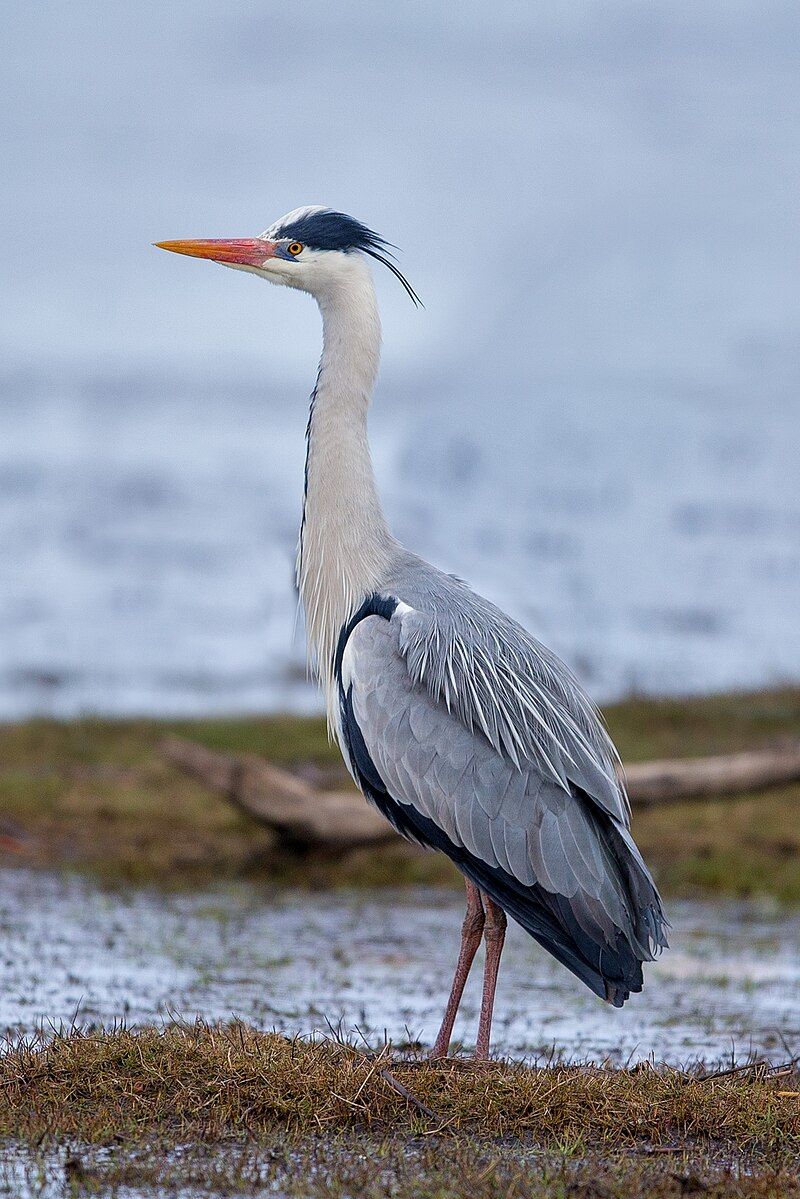
The grey heron is a long-legged wading bird that belongs to the heron family, Ardeidae. It is native to temperate regions of Europe, Asia, and parts of Africa.
The grey heron is a resident species in many of its ranges, however, some of the northern populations will migrate southwards during the autumn season. The grey heron is a solitary bird, usually found standing in shallow water, scanning the area for prey.
It mainly feeds on small fish, but will also feed on amphibians, small mammals, and even birds. It is a graceful bird, with long legs, a long neck, and a sharp beak. The grey heron is a beautiful bird, with its grey and white plumage and its long black neck feathers.
It is an important part of many wetland ecosystems and provides an essential source of food for many other species.
| Kingdom | Animalia |
| Phylum | Chordata |
| Class | Aves |
| Order | Pelecaniformes |
| Family | Ardeidae |
| Genus | Ardea |
| Species | A. cinerea |
13. Slaty-Backed Gull
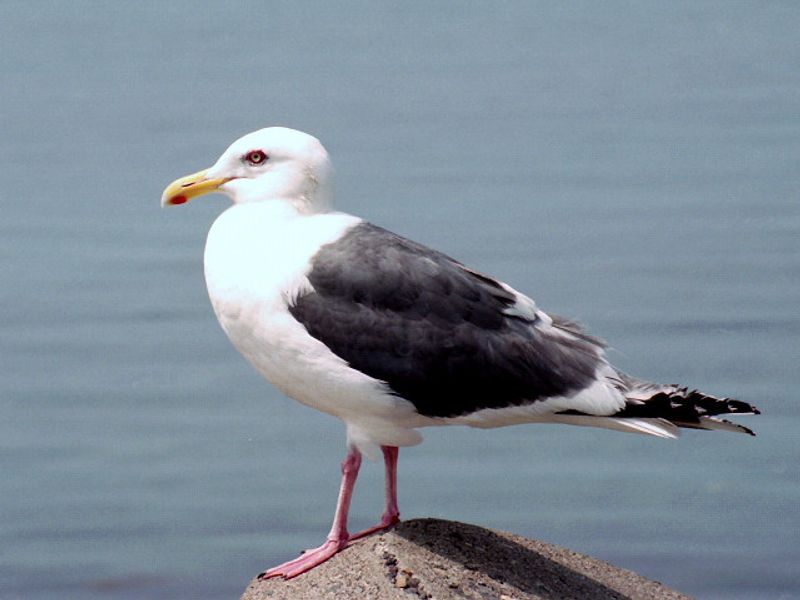
The slaty-backed gull is a large, white-headed species of seabird that nests along the coast of the Palearctic region. It has a wingspan of around 60 inches and can be identified by its gray back and wings, as well as its white head and underparts.
During the breeding season, it remains in the northeast of the Palearctic, but it is known to migrate during the non-breeding season. The slaty-backed gull is similar in appearance to the western gull and the glaucous-winged gull, two other species of white-headed gulls.
The slaty-backed gull is the largest of the three species, and it can be distinguished from the other two by its slate-gray back and wings. Its plumage is otherwise similar to the other two species, with a white head and underparts.
All three species of gulls are found in the coastal regions of the Palearctic, but the slaty-backed gull is the only one that migrates during the non-breeding season.
| Kingdom | Animalia |
| Phylum | Chordata |
| Class | Aves |
| Order | Charadriiformes |
| Family | Laridae |
| Genus | Larus |
| Species | L. schistisagus |
14. Red-Necked Grebe
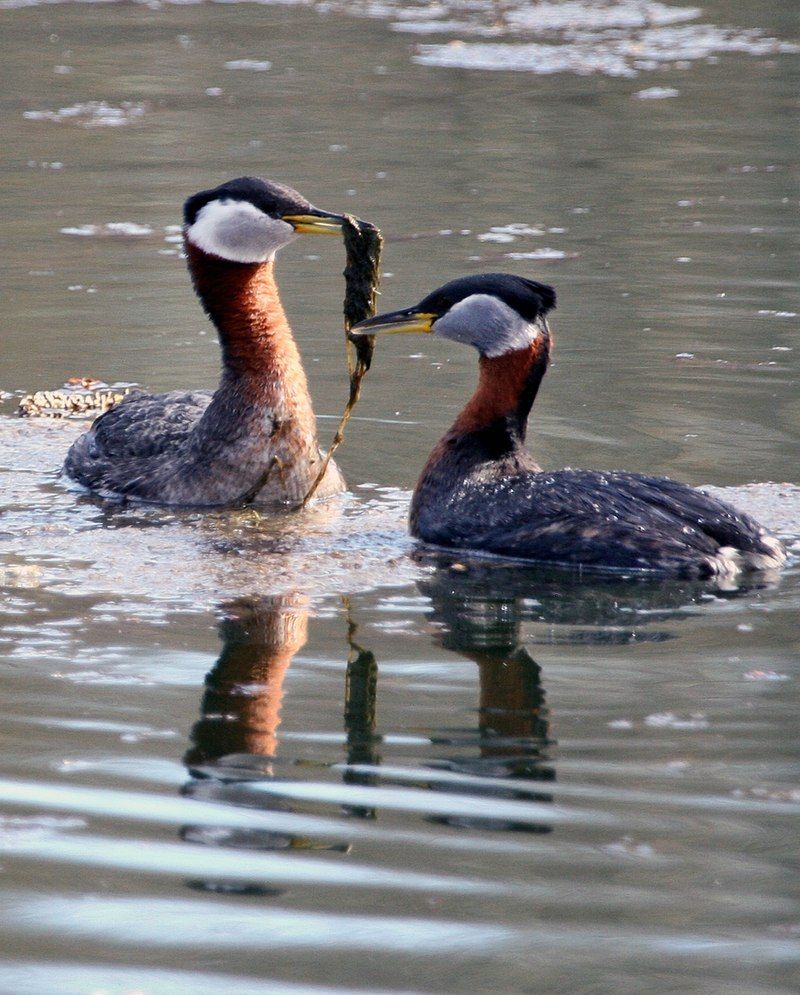
The red-necked grebe is a type of aquatic bird that is found in the temperate regions of the northern hemisphere. This species is migratory, meaning that it will travel to different areas depending on the season.
In the wintertime, it typically inhabits the calm waters just beyond the waves of ocean coasts, though some individuals may spend the season on large lakes instead.
The red-necked grebe is an integral part of its aquatic environment, and its presence is important for maintaining healthy and balanced ecosystems. The red-necked grebe is a unique species of bird, easily recognizable by its distinct red neck and black and white wings.
It also has a short, pointed bill and webbed feet that help it to swim and dive for food. It is typically found in shallow water, where it feeds on fish, crustaceans, and aquatic insects. Its diet is varied and it is able to forage throughout the day and night.
Red-necked grebes are social birds and often gather in large groups when migrating or wintering. They communicate with each other using a variety of vocalizations, and they will often perform synchronous dives and flying maneuvers.
These birds have strong family ties, and pairs will often remain together for life. Due to their reliance on healthy aquatic environments, the red-necked grebe is vulnerable to human-caused habitat degradation and destruction.
As a result, their population numbers have declined in many areas and they are now considered a vulnerable species. Conservation efforts are needed to protect and restore their habitats so that this unique species can continue to thrive.
| Kingdom | Animalia |
| Phylum | Chordata |
| Class | Aves |
| Order | Podicipediformes |
| Family | Podicipedidae |
| Genus | Podiceps |
| Species | P. grisegena |
15. Little Tern
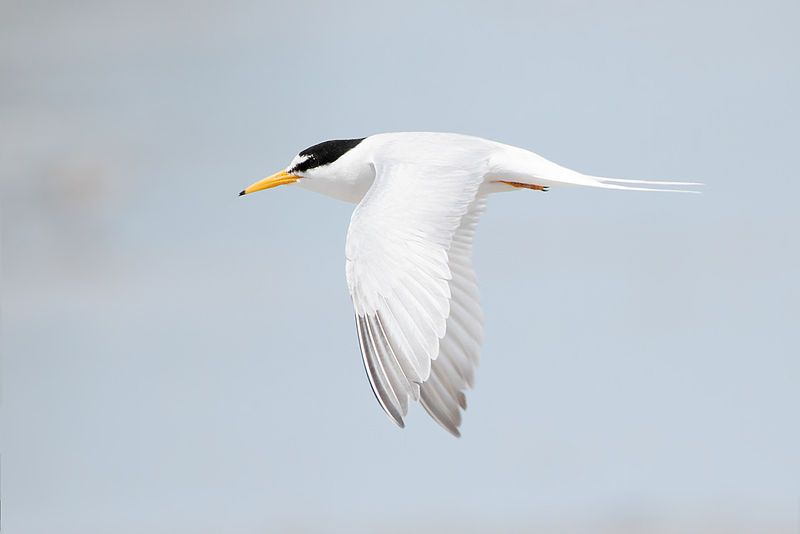
The little tern, a seabird of the family Laridae, was formerly placed in the genus Sterna. This genus is now only used for large white terns, and the genus name is a diminutive of Sterna, which means ‘tern’ in Latin.
The specific name ‘albifrons’ is derived from two Latin words – ‘albus’, meaning ‘white’, and ‘frons’, meaning ‘forehead’. The former North American and Red Sea S. a. are another species of the little tern.
| Kingdom | Animalia |
| Phylum | Chordata |
| Class | Aves |
| Order | Charadriiformes |
| Family | Laridae |
| Genus | Sternula |
| Species | S. albifrons |
16. Great Cormorant
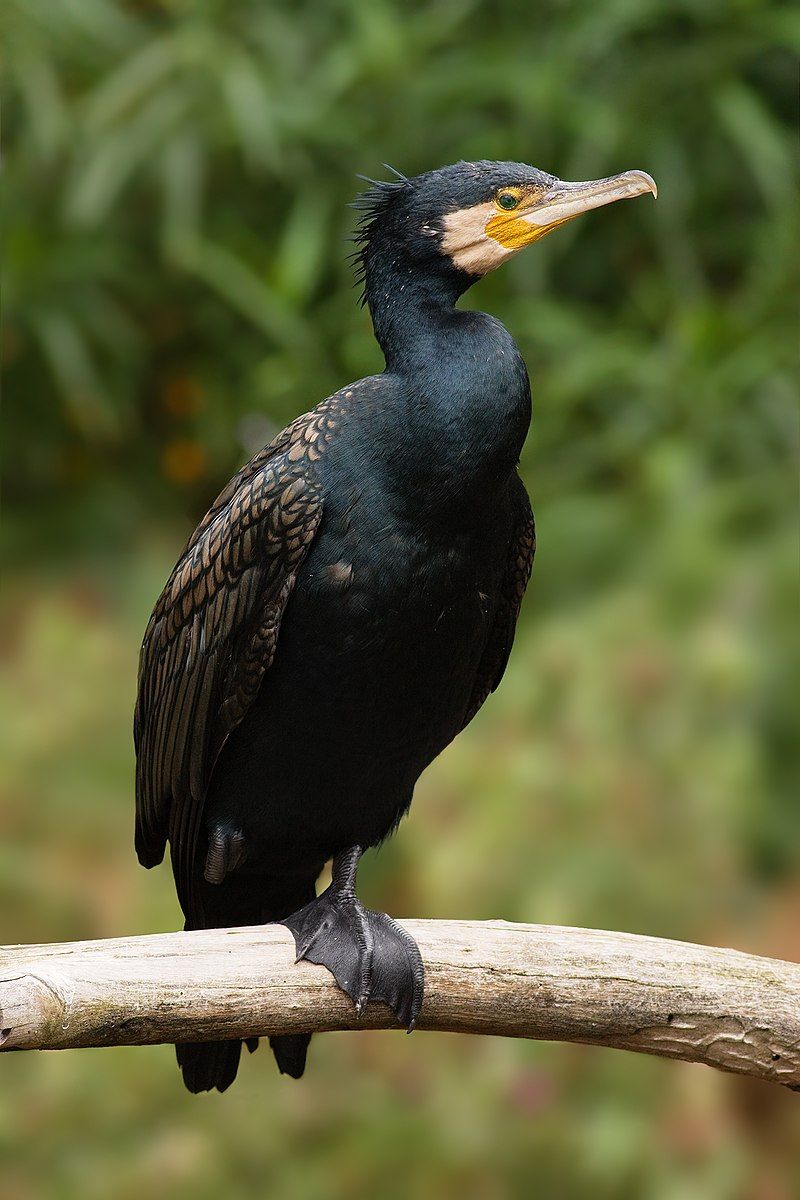
The great cormorant is a large species of seabird that can be found in many parts of the world.
It is known by different names in different locations, including the black shag or kawau in New Zealand, the great black cormorant in the Northern Hemisphere, the black cormorant in Australia, and the large cormorant in India.
This bird is a member of the cormorant family and is known for its ability to dive underwater to catch fish. It has a distinctive black plumage and a long, hooked beak which makes it easy to identify.
The great cormorant is a common sight along coastlines, in rivers, and on lakes, often gathering in large flocks. It is an important part of the ecosystems in which it lives, helping to keep fish populations in check and providing food for larger predators.
| Kingdom | Animalia |
| Phylum | Chordata |
| Class | Aves |
| Order | Suliformes |
| Family | Phalacrocoracidae |
| Genus | Phalacrocorax |
| Species | P. carbo |
17. Ruddy-Breasted Crake
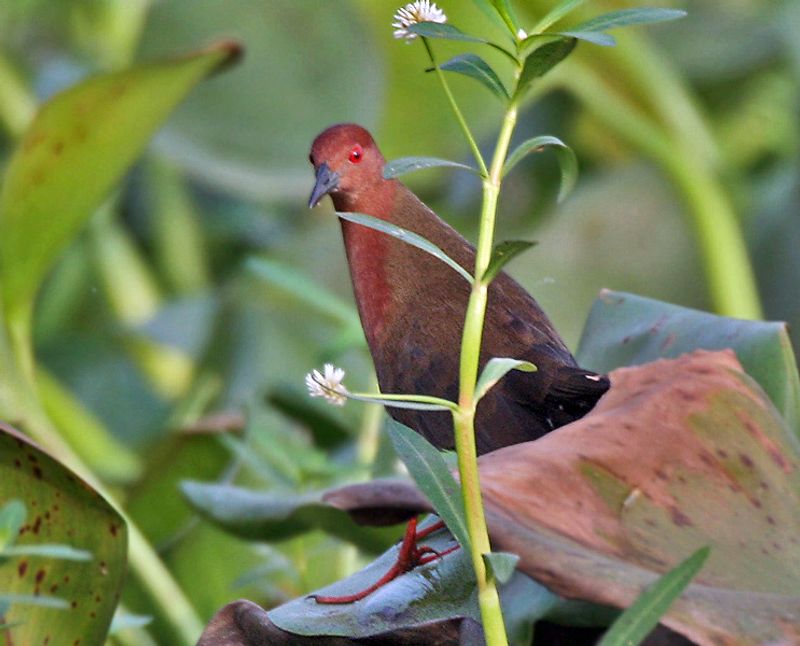
The ruddy-breasted crake, also known as the ruddy crake, is a species of waterbird belonging to the rail and crake family, Rallidae. This species is found across South Asia, extending from the Indian subcontinent to south China, Japan, and Indonesia.
They prefer to inhabit swamps and similar wet areas for breeding. The ruddy-breasted crake is a small to medium-sized bird, approximately 20 cm long. It has a brownish-olive back and wings, with a chestnut-coloured breast.
The head is greyish-brown, with a white line running from its eye to the back of its head. It has a stout black bill, which is used for feeding on aquatic invertebrates, fish, and frogs. The legs and feet are greyish-black.
The ruddy-breasted crake is a secretive species that is often difficult to observe. It prefers to remain hidden in dense vegetation, or in shallow water. It is not a migratory species and instead remains in its breeding habitat year-round.
During the breeding season, it can be heard making a series of loud, repetitive calls. Overall, the ruddy-breasted crake is a unique and interesting species that is found in a variety of wetland habitats across South Asia.
It is an important species in the ecosystem, as it helps to keep aquatic invertebrate populations in check. Despite its elusive nature, the ruddy-breasted crake is an important species to understand and appreciate.
| Kingdom | Animalia |
| Phylum | Chordata |
| Class | Aves |
| Order | Gruiformes |
| Family | Rallidae |
| Genus | Zapornia |
| Species | Z. fusca |
18. Herring Gull
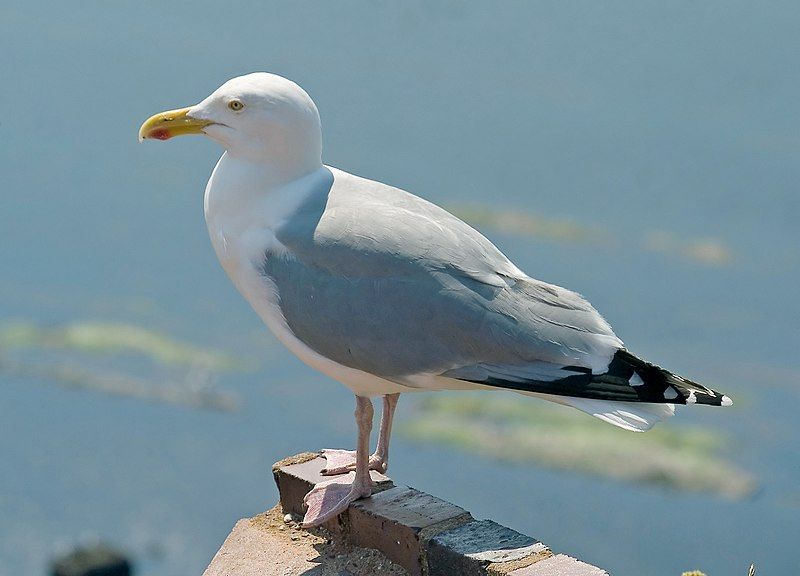
The European herring gull is a large species of gull, measuring up to 66 cm in length. It is a very common bird in the coastal regions of Western Europe but was historically even more abundant.
This species can be found across Northern Europe, including the countries of Western Europe, Central Europe, Eastern Europe, Scandinavia, and the Baltic states. It is a widespread species, with a wide range of habitats.
It typically nests in areas close to the coast, such as on cliffs or in sheltered coastal areas, but is also found in inland areas such as marshes, grasslands, and even urban areas. Its diet consists of a variety of small prey, including insects, mollusks, crustaceans, and fish.
The European herring gull is an important part of local ecosystems, helping to control populations of smaller species and providing food for other predators.
| Kingdom | Animalia |
| Phylum | Chordata |
| Class | Aves |
| Order | Charadriiformes |
| Family | Laridae |
| Genus | Larus |
| Species | L. argentatus |
19. Ruddy Kingfisher
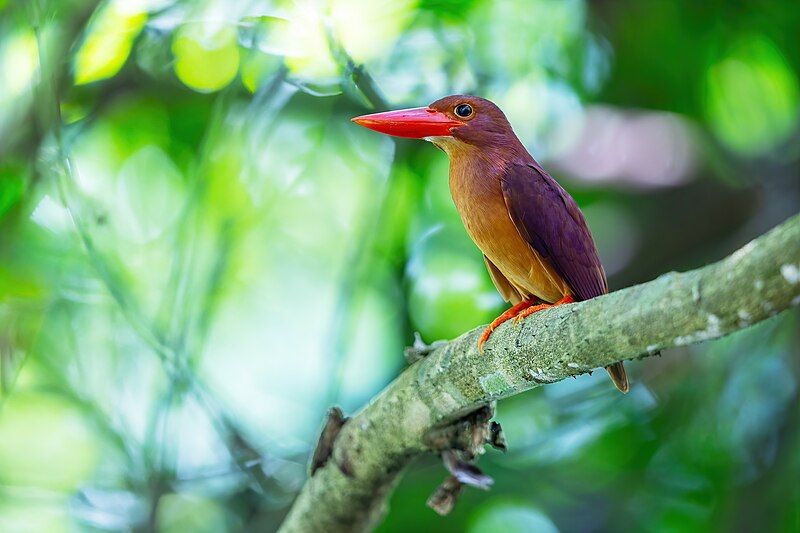
The Ruddy Kingfisher is a type of tree-dwelling kingfisher species found throughout East and Southeast Asia. It is a medium-sized bird, with males typically having a length of around 20 centimetres, and females slightly smaller at around 15 centimetres.
The plumage of the Ruddy Kingfisher is mainly an orange-rufous colour, which gives them their name. They have blue wings and a white throat and belly, with a prominent black band running across the chest.
The bill of the Ruddy Kingfisher is long and pointed, and is used to catch small fish and insects. The Ruddy Kingfisher is a social species, often found in flocks of up to 30 birds. They inhabit a wide variety of habitats, from lowland forests to coastal mangroves.
They are also found in agricultural areas and around human settlements. The Ruddy Kingfisher is a fairly common species, with a wide range, and is listed as least concern by the IUCN.
| Kingdom | Animalia |
| Phylum | Chordata |
| Class | Aves |
| Order | Coraciiformes |
| Family | Alcedinidae |
| Genus | Halcyon |
| Species | H. coromanda |
20. Japanese Bush Warbler
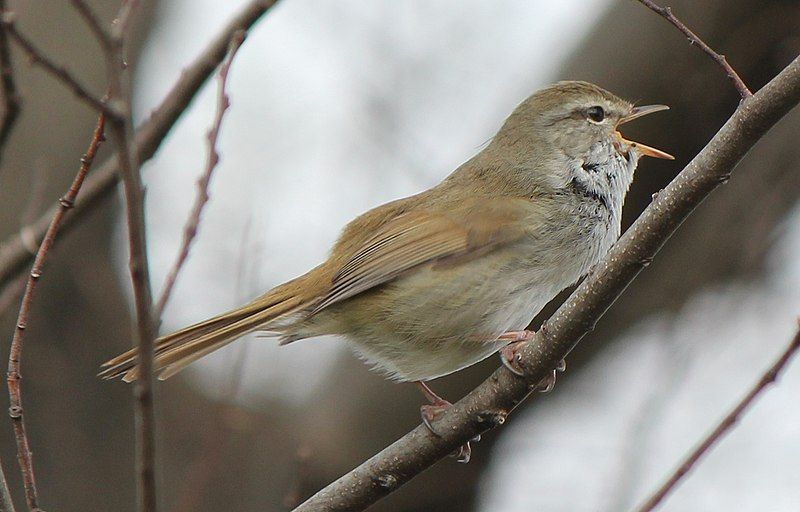
The Japanese bush warbler, also known as uguisu in Japanese, is an Asian passerine bird that is more often heard than seen.
This small bird is easily identified by its unique and unmistakable breeding song, which can be heard in many parts of Japan from the start of spring onwards.
The Japanese bush warbler is a migratory bird that spends the winter months in warmer climates and returns to Japan in early spring. It is a small bird, around 12-14 cm in length, and is mainly greyish-brown in colour with a white belly and a white line over its eyes.
They mainly feed on insects, and can often be seen in parks and gardens. The Japanese bush warbler’s song is a high-pitched and cheerful melody, often described as a “cheerful rhythm” or “melodic chirping”.
It is a very symbolic bird in Japan, often associated with springtime and renewal. It is featured in many Japanese poems and stories, as well as in traditional songs and dances.
The Japanese bush warbler is a protected species in Japan, and its population has been increasing in recent years due to conservation efforts. The Japanese bush warbler is an iconic bird in Japan, and it is a reminder of the beauty of nature and the joy of springtime.
Its cheerful song is a reminder of the joy of life, and its presence in Japanese culture is a testament to the importance of conservation and respect for the natural world.
| Kingdom | Animalia |
| Phylum | Chordata |
| Class | Aves |
| Order | Passeriformes |
| Family | Cettiidae |
| Genus | Horornis |
| Species | H. diphone |
Conclusion
Birds in Iwate are a great asset to the local environment and culture. They provide natural beauty and soundscapes, as well as a source of food and entertainment.
The birds of Iwate are unique and diverse, and their presence in the area makes it a very special place. With careful protection and conservation efforts, Iwate can continue to be a haven for these birds and the people who admire them.